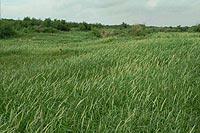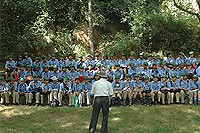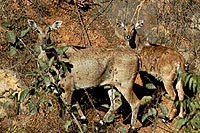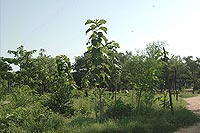
Aravalli Biodiversity Park
Rangeland
The rangeland spreads over an area of 150 acres. The grasslands are interspersed with patches of native bushes bearing edible fruits such as Capparis, Carissa, Zizyphus and Acacia woodland and Butea monosperma - Prosopis cineraria dominant communities. Groups of grey patridges, Indian hares, dancing peacocks, Black-breasted weavers, Indian silver-bills and occasionally thirsty jackals and blue bull are common inside the rangelands.
Nature Education
The Aravalli Biodiversity Park offers camping facilities for school children and a number of schools in the NCT of Delhi have been availing this facility. Scientists and nature education officers interact with students and give children their first contact with nature.
Nature Reserve Zone
The Nature Reserve Zone has some 35 native Aravalli biotic communities characteristic of the Gujarat Aravalli ranges, the Rajasthan Aravalli ranges and the Haryana - Delhi ranges.
Communities already developed are::
- Alangium salvifolium dominated community
- Dalbergia latifolia dominated community
- Anogeissus - Boswellia dominated community
- Sterculia urens dominated community
- Acacia woodland
- Butea monosperma dominated community
- Desert Bush community
- Hardwickia binata dominated community
- Wrightia tinctoria dominated community
- Anogeissus pendula dominated community
- Adina- Butea dominated community
- Tropical thorn forests with Acacia dominated community
- Mixed dry deciduous forest community
- Holoptelea integrifolia dominated community
- Moist deciduous forest community
- Semi-evergreen forests (Mt. Abu forest)
- Dry deciduous mixed forest community
About ABP | Fernary | Orchidarium | Conservatory of Butterfly | Wetland | Conservatory of Herbal Plants
Rangeland | Nature Education | Nature Reserve Zone
Rangeland | Nature Education | Nature Reserve Zone






